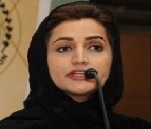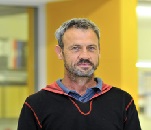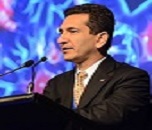Theme: Advancements and breakthroughs in the fields of Neuroscience and Neurology
Neuro Science 2022
- About Conference
- Scope & Importance
- Why to Attend Neuroscience 2022
- Target Audience
- Session & Tracks
- Market Analysis
Neuroscience 2022 welcomes participants from all around the globe to the neuroscientist meeting that is command amid June 03-04, 2022 Dublin, Ireland. The Theme of this Conference will be "Advancements and breakthroughs in the fields of Neuroscience and Neurology" that covers intensive form of essentially important sessions. This Conference enlightened on enhancements within the field of Neurology and about the novel treatment techniques used in neurology that square measure contrived by researchers to treat completely different maladies in less hard-to-please approach. This meeting concerning as a best online stage for participants who search out concerning this pattern in innovative neurology work.
Neuroscience-2022 can target the foremost recent and energizing developments in each facet of neurology think about that offers a noteworthy open door for agents over the world to fulfil, organize, and see new logical advancements in neuroscience. This online meeting includes workshops, poster presentation, video presentation, symposiums and exceptional keynote sessions by notable and eminent speakers who exceed expectations within the field of Neuroscience. This worldwide neuroscience & neurology Meeting energizes the dynamic gathering of young research forums, forthcoming specialists and growing researchers as we have a tendency to square measure facilitating Poster Award Competition and Young understudies at the gathering setting.
The Neurological Disorders establish an essential component of the Neuroscience concern i.e. it has facilitated the cultivation of goal of Neuroscience and Neurology is to give a high-quality cure and treatment to the patients with a novel approach of the upcoming market such as Neuroscience medicines, devices, and diagnostics tool. rehabilitation skills, capacity and mutual learning in low and middle-income countries. This continues to strengthen Neuroscience through such a partnership, embracing safety, sustainability, and choice of care on behalf of our patients and their family unit.
With members from around the world focused on learning about Neuroscience and its advances; this is your best opportunity to reach the largest assemblage of participants from the Neurology community. Conduct presentations, distribute information, meet with current and potential scientists, make a splash with new treatment methods, and receive name recognition at this event. World-renowned speakers, the most recent techniques, developments, and the newest updates in Neuroscience and Neurology are hallmarks of this conference.
Neuroscientists
Neuro scholars
Neurology doctors
Psychologists
Physical and occupational therapists
Rehabilitation engineers
Basic neuroscientists Pharmacists
Speech therapists
Neurorehabilitation associations & foundations
Alzheimer’s and Parkinson’s Diseases
Dementia is not a single disease in itself; it is symptoms of loss of memory, communication, and thinking. Dementia increases with age. In every 4seconds there is a new case of dementia. Old people are mostly affected by dementia. Alzheimer’s disease is one of the types of dementia. This is caused because of protein abnormalities. Brain tissue of the person suffering from Alzheimer’s disease has less number of cells and the brain shrinks. Alzheimer’s disease is caused by lifestyle, genetics, and factors that affect the brain. Parkinson’s disease damages nerve cells in the brain which produces dopamine and the decrease in the dopamine levels causes abnormal activity that result in Parkinson’s disease. This disease is caused mainly due to loss of neurons which produces dopamine.
Mood disorders
Depression
Changes in sleep habits
Hereditary
Dementia
Neurosurgery
Neurosurgery is the medical specialty concerned with the diagnosis and treatment of patients with injury to, or diseases/disorders of the brain, spinal cord and spinal column, and peripheral nerves within all parts of the body. The specialty of neurosurgical care includes both adult and paediatric patients. Dependent upon the nature of the injury or disease a neurological surgeon may provide surgical and/or non-surgical care. Neurosurgeons are not just brain surgeons, they are medically trained neurosurgical specialists who can also help patients suffering from back and neck pain as well as a host of other illnesses ranging from trigeminal neuralgia to head injury and Parkinson's disease.
Neuroanesthesia
Brain and spinal injuries
Epilepsy
Epilepsy could be a chronic disorder that causes wanton, repeated seizures. A seizure could be an abrupt rush of electrical activity within the brain. There are 2 main forms of seizures. Generalized seizures have an effect on the entire brain. Focal or partial seizures have an effect on only 1 a part of the brain. A light seizure could also be tough to acknowledge. It will last many seconds throughout that you lack awareness. Brain disorder could be a fairly common neurological disease that affects sixty-five million folks round the world. It affects concerning three million folks. Anyone will develop brain disorder; however, it’s a lot of common in young kids and older adults. It happens slightly a lot of in males than in females.
Drug abuse or alcohol misuse
Brain infection
Stroke
Anxiety
Psychoses
Neuroimaging and Radiology
Neuroimaging or brain imaging is that the employment of various techniques to either directly or indirectly image the structure, function, or medical specialty of the system. It is a relatively new discipline within medicine, biology, and science. Physicians administrative unit focus on the performance and interpretation of neuroimaging at intervals the clinical setting unit neuroradiologists.
Anatomical Imaging
Fusion Imaging
Functional and Structural Neuroimaging
Diffusion male person & Kurtosis imaging
Single-Photon Emission computed axial imaging
Stereotactic Radiosurgery
Palliative irradiation in Neuro medicine
Geriatric Neurology
As a branch of medication, gerontology thinks about with diagnosis and treating diseases that occur in adults, usually over age sixty. A set of this, geriatric neurology focuses on medicine disorders common to the current people. Older patients usually gift with overlapping issues from numerous disorders, the results of natural ageing are often tough to disentangle from clinical conditions, and blurry syndromes square measure common.
Neurogeriatrics
Stress
Brain injuries
Diabetes
Heart disease
Multiple Sclerosis
Multiple sclerosis (MS) is a chronic illness involving your central nervous system (CNS). It can affect your brain, spinal cord, and the optic nerves in your eyes. It happens once your system attacks a fatty material referred to as fat, which wraps around your nerve fibres to shield them. Without this outer shell, your nerves become damaged.
Symptoms:
Fatigue
Thinking Problems
Vision Problems
Optic Neuritis
Depression
Pain
Psychiarty
A psychiatric disorder is a mental illness diagnosed by a mental health professional that greatly disturbs your thinking, moods, and/or behaviour and seriously increases your risk of disability, pain, death, or loss of freedom.
Depression
Personality and Anxiety disorders
Schizophrenia
Neurodevelopmental disorders
Addictive behaviours
Neuropathology
Neuropathology is the study of pathology focused on the disease of brain, spinal cord and neural tissue. This consists of both central nervous system and the peripheral nervous system. Neuropathologist’s works in the department of anatomic pathology for diagnosis. Tissue analysis appears from either surgical biopsies or post mortem autopsies and this tissue samples include muscle fibres and nervous tissue. Brain disease or brain injury can be related to brain death.
Familial trends in neurological diseases
New therapies and treatments for epilepsy
New therapies and treatments for multiple sclerosis
New therapies and treatments for Parkinson's disease
Neurogenomics
Neurogenomics is the study of an organism influences the development and function of its nervous system. Neurogenomics investigates connections among genotypes, phenotypes, and the earth, utilizing a scope of genomic and bioinformatics ways to deal with integrate datasets catching various levels of sensory system function This field intends to unite functional genomics and neurobiology in order to understand the nervous system in the from a genomic perspective.
Neurogenetics
Neurological Biomarkers
Neuro-Otology
Neurorehabilitation
Neuromuscular Disorders and Peripheral Neuropathies.
Neuro-Oncology and Neurosurgical Oncology.
Neuro-Ophthalmology.
Neuroinfectious Diseases
Clinical Neurophysiology
Clinical neurophysiology is a therapeutic specialty that studies the central and peripheral nervous systems through the documentation of bioelectrical activity, whether spontaneous or stimulated. It involves the study of both pathophysiology along with clinical methods used to diagnosis both in peripheral and central nervous system. Examinations in clinical neurophysiology field are not limited to tests conducted in a laboratory. Tests which are conducted are concerned with measuring the electrical functions of the brain, nerves in the limbs & muscles and spinal cord.
Electromyography
Electroencephalography
Evoked potentials
Polysomnography
Intraoperative monitoring
Paediatric Neurology
Paediatric neurology happens mostly in youngsters or teenagers. Neurology influences around 6 in 100,000 youngsters. Neurology in kids is of three essential sorts in whom two are ischemic neurology in which blockage of veins outcome in absence of blood stream and harm. At the point when a corridor is blocked, the term blood vessel ischemic neurology (AIS) is utilized. At the point when a vein is block, the term utilized is cerebral Sino venous thrombosis (CSVT). In the third shape, haemorrhagic neurology (HS), the vein crack as opposed to being blocked. The most known signs and side effects of neurology incorporate the sudden appearance of failing or deadness of the face, arm or leg, more often than not on one side of the body.
Movement disorders (Cerebral paresis)
Muscle diseases
Liposomal storage disease
Development disorders
Brain malformations
Neuromuscular Disorders
Neuromuscular disorders affect the nerves that control your own voluntary muscles. Voluntary muscles are the ones which we can control by our self like in your arms and legs. Your nerve cells also called as neurons, send the messages that control these muscles. When the neurons become delicate or die, communication between your nervous system and muscles breaks down. As a result, your muscles weaken and waste away this weakness can lead to twitching, cramps, aches, pains, and joint and movement problems. Frequently it also affects heart function and your ability to breathe.
Myasthenia gravis
Spinal muscular atrophy
Spine and Spinal Disorders
Spine disorders occur in individuals irrespective of their age -spina bifida in infants to spinal stenosis in the elderly. Causes of spinal cord disorders include mainly injuries, infections, blocked blood supply, and compression by a fractured bone or a tumor. The boost in spinal disorders has been met with a leap in advancements in the diagnostic techniques. Endoscopic spine, MRI, X- rays CT and DEA are some of the generally used tools in diagnosing spinal disorders.
Scoliosis
Lumbar spinal stenosis
Spina bifida
Cauda equina syndrome
Tumors
Neurogenetic and Neurometabolic Disorders
Neurogenetic and neurometabolic abnormalities are disorders that affect how the brain functions. They occur in young children of all ages, races and genders. Neurogenetic disease is the umbrella term of chronic diseases which describe the brain abnormalities that occur following changes in the genes of the child and these cause certain brain cells to develop and function abnormally. In the case of neurometabolic abnormalities; these disorders result from problems in the enzymes of the body’s cells which are either unable to either use foods to produce the energy the cell needs, or get rid of the breakdown products of the foods used.
Biochemical genetics
Gene mutation and disease
Neural engineering
Genetic engineering and gene sequencing
Huntington disease
Neurodegeneration and Aging Disorders
Neurodegeneration is the progressive loss of both structure or functioning of neurons, including their death. Many neurodegenerative diseases- including amyotrophic lateral sclerosis, Parkinson's disease, Alzheimer's disease, fatal familial insomnia, and Huntington's disease- occur as a result of neurodegenerative processes. Such diseases are incurable and cause problems with movement (ataxias), or mental functioning (dementias). Of these Alzheimer’s disease and Parkinson’s disease are the most common ones. It is observed that the combination of a person’s genes and the related environment contributes to the risk of developing a neurodegenerative disease
Neuropathy
Specific Disorders
Risk Factors
Mechanisms
Management
Neuroinfections & Neuroimmunological Disorders
Despite major advancements in the management of infectious diseases, central nervous system (CNS) infections remain a great challenge. They are often difficult to diagnose, and treatments are not adequate or even nonexistent. Bioterrorism is a threat because CNS pathogens can be used as weapons. Human and animal products for treatment also involve risk. There is a need for monitoring of incidence and burden of undiagnosed CNS infections. Lack of Treatments to Neuroinfectious Diseases is also a major challenge. Neuroimmunological disorders consist of diseases in which the immune system attacks the central or peripheral nervous systems. Deregulation of both adaptive and acquired immune responses, impairment of crosstalk between these two systems, as well as alterations in sequence of innate immune mechanisms can predispose the central nervous system (CNS) to autoimmunity and neurodegeneration. Multiple sclerosis is a type of neuroimmunological disorder that affects many people that features CNS inflammation, immune-mediated demyelination and neurodegeneration.
Neuroinfections - Etiological Classification
Etiopatogenesis of Neuroinfections
Autoimmune Disorders
CNS Inflammation
Stem Cells in Neuroimmunology
CNS–Immune System Interactions
Brain Mapping & Biomarkers
The brain is the most complicated organ in our body. Every area has a specific function that controls everything that we do. For years, doctors have had a rough map of the brain, but never to the degree that they could operate and know for sure how to avoid every critical portion since each person’s brain are unique, causing variations in the map. This fact, combined with the sheer complexity of the brain, has challenged neurosurgeons for years.
A biomarker is a characteristic that is objectively measured and evaluated as an indicator of normal biological processes, pathogenic processes, or pharmacologic responses to a therapeutic intervention. Biomarkers for neurological diseases used to be few and far between, but better technology is making it easier for researchers to track brain health by measuring molecules. This means less invasive.
- Cognitive Neuroscience Treatment
- Schizophrenia
Brain Stroke
A stroke is a “brain attack”. It occurs when blood flow to an area of brain is cut off. When this happens, brain cells are deprived of oxygen and begin to die. When brain cells die during a stroke, abilities controlled by that area of the brain such as memory and muscle control are lost. Stroke is a disease that affects the arteries leading to and within the brain. It is the No. 5 cause of death and a leading cause of disability in the United States. A stroke occurs when a blood vessel that carries oxygen and nutrients to the brain is either blocked by a clot or bursts (or ruptures). When that happens, part of the brain cannot get the blood (and oxygen) it needs, so it and brain cells die.
High blood pressure
Brain Tumor and Gliomas
Gliomas are brain Tumors starting in the glial cells. Gliomas can be low grade (slow growing) or high grade (fast growing). The position of the tumor is also very important. Glioma is a type of tumor that occurs in the brain and spinal cord. Gliomas begin in the gluey supportive cells (glial cells) that surround nerve cells and help them function. The symptoms, prognosis, and treatment of a glioma depend on the person’s age, the exact type of tumor, and the location of the tumor within the brain.
Hematologic malignancies
Clinical Neurology
Neurosurgery is an important part of medicine, working to protect, heal and treat the brain. There are many reasons an individual may need a neurosurgeon, ranging from an issue present at birth to treating a spinal cord injury caused by trauma or even to decrease the damage caused by a stroke. The Clinical Neurological nursing program provides patient-centred care to acute neurology and neurosurgical patients. Specialty care in neurology includes Epilepsy, Movement Disorders, Neuromuscular Disorders, Regional Stroke Program, Regional Multiple Sclerosis Clinic, and Neuro-Critical Care. Neurosurgery Care includes Neurovascular, Neuro-oncology, Spinal Surgery, Spinal Cord Injury, Head Injury, and Epilepsy Surgery.
Neuro Pharmacology
Neuropharmacology is the study of the effects of drugs on the nervous system, with the goal of developing compounds that offer therapeutic benefit in humans with psychiatric and neurological disease. It is focused on the development of compounds which may be of benefit to individuals who suffer from neurological or psychiatric illness. We believe that an understanding of a drug’s action requires an integrated knowledge of the cellular and molecular mechanisms by which the drug exerts its effects upon brain circuitry and ultimately human behaviour.
Neurochemical interactions
Cognitive Neuroscience
Cognitive neuroscience is the scientific field that is concerned with the study of the biological processes and aspects that underlie cognition, with a specific focus on the neural connections in the brain which are involved in mental processes. It addresses the questions of how cognitive activities are affected or controlled by neural circuits in the brain. Cognitive neuroscience is a branch of both neuroscience and psychology, overlapping with disciplines such as physiological psychology, cognitive psychology, and neuropsychology. Cognitive neuroscience relies upon theories in cognitive science coupled with evidence from Neuropsychology, and Computational modelling.
Relation Between Psychology and Neuroscience
Causes of Dementia
Experimental Psychology
Physiological psychology
Cognitive genomics
Complications of mental illness
Translational Research
Neuro-Oncology
Neuro-oncology is a unique, developing neurologic subspecialty that combines many aspects of neurology with those of cancer biology. The neuro-oncologist is expert in both the diagnosis and management of primary brain tumors and neurologic complications of cancer. A career in neuro-oncology presents opportunities to utilize a multidisciplinary team approach and the application of cutting-edge technology toward patient treatment while providing compassionate patient care. Neuro-oncology can trace its modern origins to the 1970s, when the first therapeutic trials were begun. The treatment and management of primary brain Tumors is now a rapidly evolving field.
Tumors
Neuropsychiatry and Neuropsychology
A neuropsychologist is a psychologist who specialises in the functions of the brain, particularly memory, concentration and problem solving. Their work involves testing and assessing the psychological problems people may experience following an injury or neurological disorder, and helping them in their rehabilitation. Neuropsychiatrists and neuropsychologists specialise in treating patients with neurological conditions and helping them to deal with the psychological effects of illness or injury.
psychology and neurology
Aging and Brain Health
Brain health refers to how well a person’s brain functions across several areas. Brain health can be affected by age-related changes in the brain, injuries such as stroke or traumatic brain injury, mood disorders such as depression, substance use disorder or addiction, and diseases such as Alzheimer’s disease. While some factors affecting brain health cannot be changed, there are many lifestyle changes that might make a difference.
Aspects of brain health include:
Cognitive health — how well you think, learn, and remember
Motor function — how well you make and control movements, including balance
Emotional function — how well you interpret and respond to emotions (both pleasant and unpleasant)
Tactile function — how well you feel and respond to sensations of touch — including pressure, pain, and temperature
MOG antibody disease (MOGAD)
MOG antibody disease (MOGAD) is a recently coined neuro-inflammatory condition that preferentially causes inflammation in the optic nerve but can also cause inflammation in the spinal cord and brain. Myelin oligodendrocyte glycoprotein (MOG) is a protein that is located on the surface of myelin sheaths in the central nervous system. While the function of this glycoprotein is not exactly known, MOG is a target of the immune system in this disease. The diagnosis is confirmed when MOG antibodies in the blood are found in patients who have repeated inflammatory attacks of the central nervous system.
Neuromyelitis Optica Spectrum Disorder (NMOSD)
Transverse Myelitis (TM)
Acute Disseminated Encephalomyelitis (ADEM)
Optic Neuritis (ON)
Millions of people worldwide are affected by neurological disorders. More than six million people die because of stroke each year; over 80% of these deaths take place in low- and middle-income countries. More than 50 million people have epilepsy worldwide. It is estimated that there are globally forty eight million people with dementia with 7.7 million new cases every year - Alzheimer's disease is the most common cause of dementia and may contribute to 60–70% of cases. The prevalence of Anxiety is more than 10% worldwide.
The global Neurological disorder market value $2.9 billion in 2016 is ready to achieve $14.8 Billon, rising at a Compound Annual rate of growth (CAGR) of eight percent, across the 7 Million by 2026 consistent with world information, a recognized leader in providing business info and analytics Alzheimer's disease is that the commonest style of dementia. The proportions of these with totally different varieties of Neurological Disorder are often dampened as follows:
Economically is predicated mostly on services and commerce of the 390,480 enterprises within the town, 80.6 % square measure engaged in commerce, transportation, and various services, 6.5 % in construction and 3.9 % in business. The bulk of Paris salaried workers fill 370,000 businesses services jobs, targeted within the north-western eighth sixteenth, seventeenth arrondissements.
According to United Nations agency 47.5 million folks have Neurological disorders and each year 7.7 million new cases square measure showing. By 2030 total cases of Neurological Disorder is projected to be 75.6 million and virtually triple by 2050 to one hundred thirty-five million. Neurological Diseases percentage 60-70 you look after cases in Neuroscience & Dementia and second commonest condition of dementedness is tube-shaped structure Neurological Disorders that contributes Two Hundreds of cases everywhere the globe.
Conference Highlights
- Alzheimer’s and Parkinson’s Diseases
- Neurosurgery
- Epilepsy
- Neuroimaging and Radiology
- Geriatric Neurology
- Multiple Sclerosis
- Psychiarty
- Neuropathology
- Neurogenomics
- Clinical Neurophysiology
- Paediatric Neurology
- Neuromuscular Disorders
- Spine and Spinal Disorders
- Neurogenetic and Neurometabolic Disorders
- Neurodegeneration and Aging Disorders
- Neuroinfections & Neuroimmunological Disorders
- Brain Mapping & Biomarkers
- Brain Stroke
- Brain Tumour and Gliomas
- Clinical Neurology
- Neuro Pharmacology
- Cognitive Neuroscience
- Neuro-Oncology
- Neuropsychiatry and Neuropsychology
- Aging and Brain Health
- MOG antibody disease (MOGAD)
To share your views and research, please click here to register for the Conference.
To Collaborate Scientific Professionals around the World
| Conference Date | June 03-04, 2022 | ||
| Sponsors & Exhibitors |
|
||
| Speaker Opportunity Closed | |||
| Poster Opportunity Closed | Click Here to View | ||
Useful Links
Special Issues
All accepted abstracts will be published in respective Our International Journals.
Abstracts will be provided with Digital Object Identifier by



























